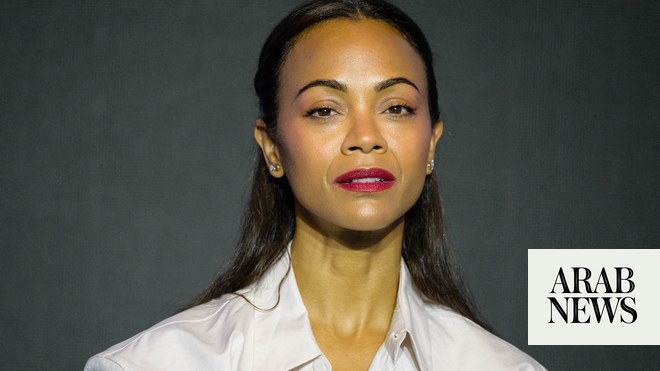
When people talk about modernising classic ballets, it usually means taking popular stories and creating new steps for them. But Tamara Rojo is trying the opposite. In her first creation for English National Ballet, Raymonda, she’s keeping the original steps and rewriting the story, turning an 1898 ballet set in the Crusades into a new production inspired by Florence Nightingale and the Crimean war.
Rojo’s brainwave solves two problems that pop up when it comes to restaging older works. First, scenarios that have gone stale, sometimes peppered with casual sexism and racism – the original Raymonda is a young woman, engaged to a knight, who is pursued and kidnapped by an offensively cliched Arab baddie. Second, if you always reinvent the steps, you lose the “text” of the ballet itself, the very basis of the art form.
As director of ENB since 2012, Rojo has been marching forwards, commissioning new work from contemporary choreographers such as Akram Khan, but she values the past too. “You’ve got an ever-shrinking repertoire of classical works,” says Rojo. “And the fact is that classical works are very important for our art form: the audience love to watch classical ballet and the dancers want to dance them, because it is a proof of their skill. You prove yourself through those very challenging technical roles. We can’t just chuck them away.”
Raymonda was originally created by Marius Petipa, choreographer of Swan Lake, Sleeping Beauty and The Nutcracker, and according to Rojo there is no one to match him. “I have seen how that technique challenges you but also teaches you how to dance, it really does,” she says. “There’s nothing like the coordination that comes from dancing those roles. Even the most contemporary of choreographers want to work with dancers who have that skill.”
The particular skills required of a dancer have changed since Petipa’s time. To make Raymonda, Rojo went back to the source, to look at scores held at Harvard University made by Petipa dancer Vladimir Stepanov, who developed his own system of ballet notation. She found the original version of the choreography very different from what you would see now. “The art form has evolved and dancers are unrecognisable in their abilities,” says Rojo. “The men then did almost nothing. The original Jean de Brienne [the heroic male lead] was in his 50s.”
Ballerinas today are much “more lyrical, flexible”, she says. They are slender and their muscles longer than those of their predecessors. “We do more variety of movement now, legs all over the place,” says Rojo, “but some things, like hopping on pointe, have been lost. It requires a volume of muscle that ballerinas today don’t have.” The original Raymonda character has to do 32 jumps on pointe on one leg. “Today that is not something we enjoy doing as much,” says Rojo. So has she put those jumps in her new production? “No,” she laughs. “Some things I have adapted.”
Rojo has choreographed some new material for the production alongside Petipa’s but sees herself more as a director. “More in line with what Rufus Norris or Nick Hytner or Michael Grandage do with the classical canon,” she says. “Taking it and putting it into a context that the audience might care about.” Erasing the xenophobia was the first priority, but shifting the backdrop from the Crusades to the Crimean war gave Rojo the chance to solve another problem – that of Raymonda herself – a weak character with little motivation behind her steps. “[In the original] she’s everywhere but nowhere,” says Rojo. “So I wanted to give her that agency and voice.” The most famous woman of the Crimean war is, of course, Florence Nightingale, who directly inspired Raymonda’s character. “Raymonda’s struggling to find the freedom to follow her calling,” says Rojo. “If you read Cassandra, the book Florence Nightingale wrote, she despises her mother and sister and the social networks and expectations around her, stuck in a world where she’s expected to marry. In a way, that’s Raymonda.”
In Rojo’s ballet, Raymonda’s fiance, John, is a soldier in Crimea and she follows him there to be a nurse, where she meets John’s friend Abdur, a sophisticated Ottoman envoy, “and suddenly finds herself trapped in a three-way situation between her calling, her duties and something exciting and intriguing and different. And that’s where the ballet finds its tension.” Although it’s set 170 years ago, there’s still much that’s relevant. “The struggle of women, their career versus private life is still very much there, if you ask me,” says Rojo.
Telling a story in dance is a tall order. There’s a reason ballet companies so often stick to well-worn tales, because the audience already knows what’s going on. “Narrative in ballet is difficult,” Rojo admits. “There’s no explanation, no pausing and telling you what happened in the other room, there are limitations. But when it works, there’s nothing like it,” she says. “Because it works on an emotional level rather than an intellectual level, when you get it right no other art form can touch ballet. And that’s what we’re always searching for, that miracle moment.”
English National Ballet’s Raymonda is at London Coliseum, 13-23 January and at the Mayflower, Southampton, 30 November-3 December.











